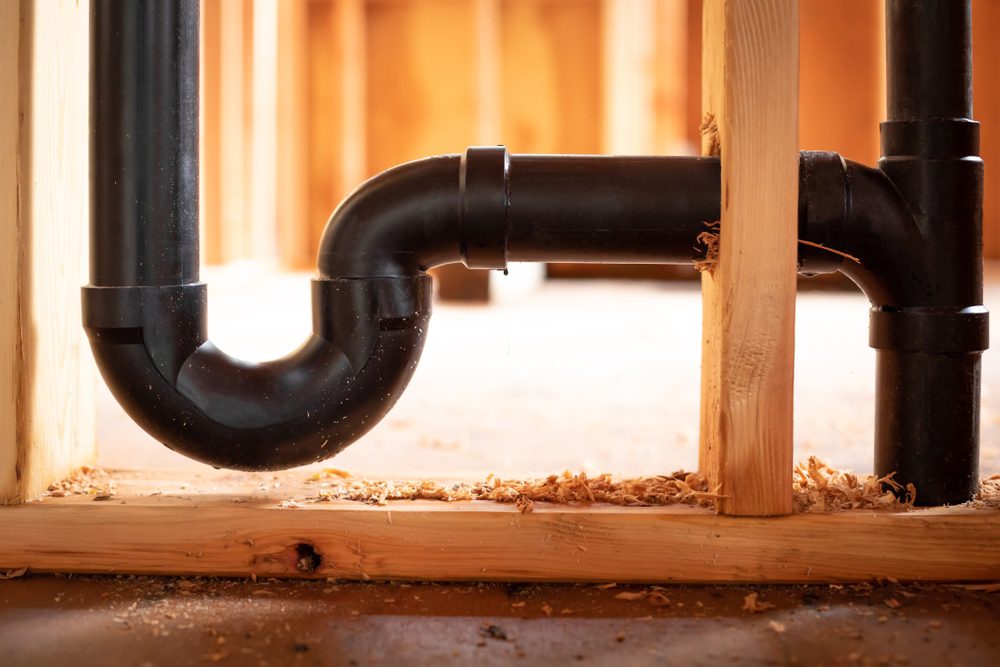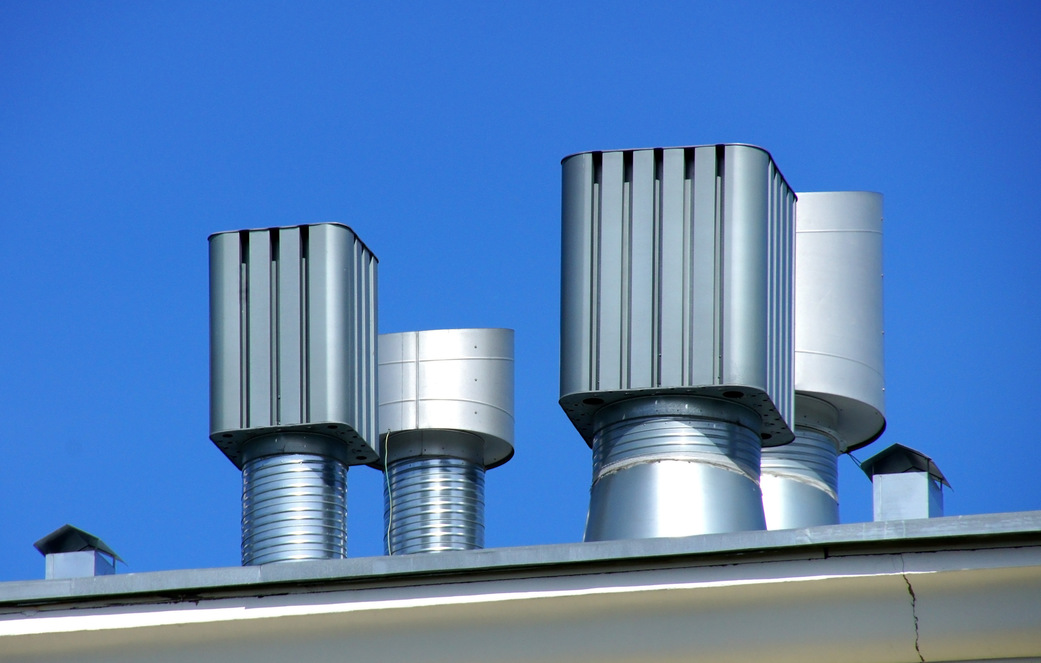Why Proper Ventilation Supports Your Plumbing System
Why Proper Ventilation Supports Your Plumbing System
Blog Article
What are your thoughts and feelings about Why Plumbing Air Vents Are Important?

Appropriate ventilation in plumbing systems is often overlooked, yet it is important for maintaining the functionality and safety of your home's plumbing. Air flow aids regulate air pressure, prevent the accumulation of hazardous gases, and guarantee the efficient elimination of waste. In this overview, we will explore the significance of correct pipes ventilation, just how it works, and the advantages it gives your pipes system.
How Air Flow Works in Plumbing Solutions
Air Pressure Policy
Appropriate ventilation keeps balanced atmospheric pressure within the pipes system. When water flows via pipelines, it displaces air. Without ample ventilation, this variation can develop unfavorable stress, leading to slow drains pipes or siphoning of water from catches, which can create undesirable odors to leak into the home.
Avoiding Sewer Gas Build-up
One of the most crucial functions of plumbing vents is to avoid drain gases, such as methane and hydrogen sulfide, from collecting within the home. These gases can pose severe health risks and are very combustible. Vent pipelines permit these gases to run away securely outside.
Helping in Waste Elimination
Air flow helps in the effective elimination of wastewater by preventing airlocks in the drainage system. When air can move freely through the vents, it allows water and waste to move efficiently with the pipes, decreasing the risk of obstructions and backups.
Benefits of Correct Ventilation
Enhanced System Effectiveness
Effectively aerated pipes systems operate a lot more efficiently, with less blockages, faster draining pipes, and less stress on the pipes. This efficiency prolongs the life-span of the plumbing system.
Improved Air Quality
By stopping sewage system gases from entering your home, appropriate air flow adds to far better interior air high quality, making your living environment healthier and much more comfy.
Stopping Water Damage
Adequate air flow assists stop water from being siphoned out of traps, which can result in drain gases getting in the home and creating water damages gradually.
Actions to Ensure Correct Ventilation
Consulting Plumbing Codes
Always speak with neighborhood pipes codes when developing or changing your pipes system. These codes offer the essential guidelines for proper airing vent and ensure your system satisfies safety and security criteria.
Routine Evaluation and Maintenance
Regular inspections can aid determine potential air flow problems prior to they become significant problems. Maintenance jobs, such as cleaning up vent pipes and checking for obstructions, are necessary for maintaining the system in good working order.
Specialist Installment
For new installations or major modifications, it's wise to work with a professional plumbing technician. They have the proficiency to make certain the ventilation system is appropriately developed and installed according to code.
Understanding Air Flow in Plumbing
Ventilation in pipes describes the network of pipelines that allow air to move with the drainage system. These vents serve numerous functions, consisting of controling air pressure within the pipes, avoiding sewer gases from getting in the home, and helping in the smooth circulation of wastewater.
Kinds Of Plumbing Vents
Key Stack Vent
The main pile air vent, also known as the air vent pile, is the key vent in a pipes system. It extends from the primary drain align with the roof covering, permitting gases to leave and fresh air to enter the system.
Branch Vent
Branch vents attach to the major stack air vent and serve individual fixtures, such as sinks, toilets, and showers. These vents ensure that each fixture has ample ventilation to work properly.
Air Admission Shutoff (AAV).
An Air Admittance Valve (AAV) is a one-way valve that permits air to get in the plumbing system without the requirement for a traditional vent pipeline prolonging with the roof. AAVs are typically made use of in renovations or areas where mounting a common vent is not practical.
Indicators of Poor Air Flow in Pipes.
Slow Draining Fixtures.
If your sinks, tubs, or bathrooms are draining pipes slowly, it could be an indication of bad air flow. Inadequate air flow can create a vacuum cleaner result, making it challenging for water to drain pipes appropriately.
Gurgling Sounds.
Gurgling sounds originating from drains are usually an outcome of air being sucked through water traps because of unfavorable stress in the pipes. This is a clear sign of inadequate ventilation.
Undesirable Odors.
Drain smells inside your home are a red flag that your pipes system is not properly ventilated. This can mean that sewage system gases are not being properly vented outside, leading to possibly unsafe problems.
Typical Ventilation Errors.
Insufficient Vent Sizing.
Utilizing undersized vent pipes can lead to bad air flow and stress inequalities in the system. It's vital to make use of vents that meet the details demands of your pipes system.
Improper Vent Placement.
Putting vents also much from the components they serve can reduce their efficiency. Correct placement makes sure that air can flow freely and successfully via the system.
Ignoring Code Needs.
Building regulations give certain guidelines for pipes air flow. Ignoring these codes can result in a system that fails to work appropriately and may cause costly fixings or carcinogen.
Final thought.
Proper air flow is an important part of any kind of plumbing system, making certain that it operates effectively and safely. By understanding the importance of ventilation, recognizing the indicators of inadequate ventilation, and taking steps to maintain your system, you can protect against pricey concerns and safeguard your home's air quality.
4 Things You Should Know About Your Plumbing Vents
What Plumbing Vents Are
Also called a vent stack, a plumbing vent is a vertical pipe attached to your drain line that runs through your roof. The plumbing vent pipe, or plumbing air vent, removes gas and odors from your plumbing system and allows fresh air to enter the pipes, helping the water to flow out of the drain pipes.
What Plumbing Vents Do
Plumbing vents have two basic functions. One of which is to allow unpleasant smelling wastewater and sewer gasses to escape your plumbing system instead of entering your home. Plumbing vent pipes are typically located on roofs, away from windows, to ensure the fumes exit the home completely.
The other function of the plumbing vent is to move fresh air into your plumbing system. This helps move water through every plumbing fixture in your house, like toilets and sink drains. Think of the way in which you need to let a little air into the bottle as you pour soda in order to make the drink flow smoothly.
Different Types of Plumbing Vents
True vent: This is the most common vent option. In simplest terms, a true vent is a vertical pipe attached to your drain line that exits through the roof. They often function as the main vent that other fixtures can connect to. Re-vent pipe or auxiliary vent: Attached to the drain line near specific plumbing fixtures, re-vent pipes run up and over to connect to the main vent. Common vent: Two plumbing fixtures installed on opposite sides of a wall are typically tied into the vent stack using something known as a sanitary cross. Wet vent: This venting option operates as a drain pipe and a vent at the same time. Wet vent drainage systems drain water from one fixture while venting the air from another. Although they’ve been used for over 100 years, wet vent systems have only recently been added to the plumbing code in many areas. If you’re planning on installing one in a bathroom remodel, make sure you check your local code prior to construction. Loop vent: For free-standing fixtures like kitchen island sinks, loop vents are ideal. These vent pipes run under the floor, rise from the P-trap, and create a loop inside the cabinet sink. Air admittance valve: An AAV is a one-way mechanical valve typically installed at the site of the plumbing fixture. AAVs allow venting to occur without having to tie into a larger venting system. They’re ideal for venting fixtures where you aren’t able to easily connect to an existing vent system. Common Plumbing Vent Issues
Although vent pipes typically don’t have water flowing through them, they’re still subject to many typical plumbing issues. For example, clogs are one of the most common problems associated with sewer vent pipes. If your vent pipe gets clogged, all of your plumbing fixtures tied into the vent stack will be affected.
A sink with a slow drain that bubbles and gurgles or a strong sewage smell around your toilet are both indicators that your toilet vent pipe is clogged. Because most vent pipes exit through the roof, old leaves, twigs or even a bird’s nest could be clogging the pipe.
Clogs in your vent pipe system cause a buildup of negative pressure, meaning that water won’t be able to flow out of your home very well. It’s similar to putting your finger over the opening of a straw to trap water inside. When you remove your finger, the water is able to flow out of the straw.
If you suspect you have any blockage in your vent, make sure you have a professional come examine the situation. Left unchecked, a blocked air vent can lead to other costly repairs, like leaks and sediment buildup.
Under Pressure
Pipe vents are essential aspects of a home’s plumbing system. Owning a home means learning about all sorts of things you never put much thought into before. But by understanding as much as you can about the important systems of your home, you can keep those budgets intact and those anxiety levels low.
https://www.homeserve.com/en-us/blog/home-improvement/plumbing-vents/

As a keen reader about What Is a Plumbing Vent and Why Is It Important, I assumed sharing that excerpt was necessary. Sharing is caring. You never know, you will be helping someone out. We appreciate your readership.
Book Today Report this page